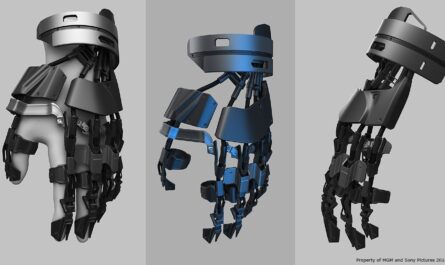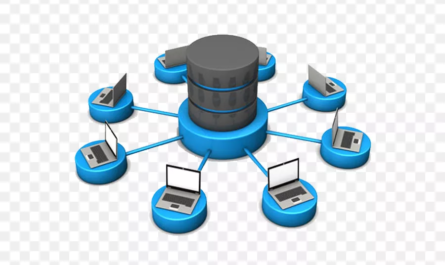Distributed acoustic sensing (DAS) uses fiber optic cables as distributed acoustic sensors, picking up vibrations along the length of the cable. By injecting and receiving laser pulses into the fiber, DAS can detect acoustic signals – vibrations of any frequency – along the entire length of the cable. This provides seismic data with unprecedented spatial resolution and coverage. DAS replaces arrays of geophones with a single optically-interrogated fiber, significantly reducing equipment costs while greatly improving capabilities.
How Does DAS Work?
At its most basic, DAS works by scattering laser light pulses as they travel through the fiber optic cable. Changes in the backscatter of light caused by acoustic signals are detected and converted into seismic data. The cable itself acts as thousands of virtual sensors along its length. A Distributed Acoustic Sensing (DAS) interrogation unit houses a laser and optical equipment to inject pulses into the cable and analyze the backscattered light. This sophisticated sensing allows seismic signals to be detected and located with meter-scale resolution versus the 10s of meters of traditional sensor arrays.
Benefits of Continuous Spatial Sampling
One of DAS’s key advantages is its ability to continuously sample along the entire length of the fiber. This provides effectively unlimited fold coverage compared to discrete sensor arrays which leave gaps. DAS removes the problems of spatial aliasing and missing data, improving signal-to-noise and enhancing seismic images. The high resolution allows fractures and faults to be mapped in detail. It’s also possible to re-datum or migrate data offline to focus on areas that weren’t targeted during initial acquisition.
Cost Savings Through Fiber Reuse
Distributed Acoustic Sensing (DAS) uses existing buried fiber optic telecom cables or new cables specifically installed for seismic use. Once in place, the cable acts as a permanent monitor and can be reused for multiple surveys. DAS interrogator trucks can rapidly roll over a field collecting repeat surveys. This means far less equipment needs mobilizing versus sensor fleet deployments. It reduces upfront capital costs and lowers operating expenses compared to recurring sensor rental and deployment costs. Over time, the cost savings of DAS mount up significantly versus traditional seismic techniques.
Wider Range of Deployment Scenarios
As DAS relies on fiber optic cables not discrete sensors, it supports a much wider range of deployment environments and scenarios. Cables can be buried directly in the ground, laid on the surface, clamped to infrastructure like pipelines, or floated on bodies of water suspended from buoys. This makes DAS highly applicable for permanent reservoir monitoring, pipeline leak detection, oil spill monitoring and broader civil applications like border security and infrastructure health monitoring. Cable installations can be optimized for each specific use case.
Applications in Onshore and Offshore Surveys
On land, DAS has transformed conventional 2D/3D surveys. Entire square kilometer areas can now be monitored continuously with meter scale resolution using cables laid out in grids. This reveals fine-scale features not seen before. DAS also supports high-density, high-fold surveys ideal for unconventional resource plays. Offshore, DAS allows fragile marine environments and infrastructure to be monitored with minimal invasive works. Cables can be quickly deployed onto the seafloor or integrated into drill strings, risers and platform legs for permanent monitoring applications.
Role in Reservoir Monitoring and Time-Lapse Surveys
As a permanently emplaced monitoring system, DAS is extremely well-suited to 4D/time-lapse seismic applications. Repeated surveys track changes in producing fields, such as fluid movement, compaction and subsidence. The ultra-high resolution enables enhanced reservoir characterization and improved fluid prediction. Linked to production data, DAS helps optimize recovery processes. Early detection of leaks or impending infrastructure risks is also possible through permanent, real-time structural integrity monitoring using dark fiber in pipelines and rigs.
Emerging Applications for Distributed Acoustic Sensing (DAS)
Beyond oil and gas, DAS is being applied elsewhere. Its ability to detect vibrations along entire kilometer lengths of cable opens up applications in civil engineering, defense and security. Fiber optic cables emplaced on bridges, dams and other infrastructure allow structural health to be continuously monitored. Buried cables also offer a solution for monitoring borders and detecting intrusions across vulnerable areas. Pilot projects are demonstrating these emerging security and anthropic geophysical applications.
Distributed acoustic sensing revolutionizes seismology by utilizing existing dark fiber assets and new dedicated cables as vast arrays of virtual sensors. The technology delivers ultra-high resolution seismic monitoring at a fraction of the cost of traditional sensor methodologies. As DAS matures, its range of applications will continue to expand across multiple industries thanks to its versatile deployment capabilities. It represents a paradigm shift that will enhance solutions across oil and gas production and security domains for many years to come through permanent, real-time distributed sensing from installed optical cables.
*Note:
1. Source: Coherent Market Insights, Public sources, Desk research
2. We have leveraged AI tools to mine information and compile it
About Author - Ravina Pandya
Ravina Pandya,a content writer, has a strong foothold in the market research industry. She specializes in writing well-researched articles from different industries, including food and beverages, information and technology, healthcare, chemicals and materials, etc. With an MBA in E-commerce, she has expertise in SEO-optimized content that resonates with industry professionals. LinkedIn Profile




